-
 La Serena
La Serena The romantic, seaside city of La Serena, wrapped around some of the most beautiful beaches in northern Chile, is more than just a fine spot to relax with a mixed drink and work on your tan. (Though the appealing collection of spas, restaurants, and nightlife options might convince you ot
La Serena
La Serena The romantic, seaside city of La Serena, wrapped around some of the most beautiful beaches in northern Chile, is more than just a fine spot to relax with a mixed drink and work on your tan. (Though the appealing collection of spas, restaurants, and nightlife options might convince you ot
-
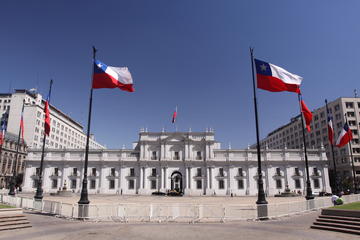 La Moneda
La Moneda La Moneda is easy to spot – its white, neoclassical walls make up the presidential palace that takes up an entire city block in downtown Santiago. Construction began in 1781 and was completed in 1805, when it was used as a mint, which is what the term moneda translates to in English.The
La Moneda
La Moneda La Moneda is easy to spot – its white, neoclassical walls make up the presidential palace that takes up an entire city block in downtown Santiago. Construction began in 1781 and was completed in 1805, when it was used as a mint, which is what the term moneda translates to in English.The
-
 Lake Todos los Santos
Lake Todos los Santos Lago Todos los Santos, or All Saints Lake, is located within Vicente Perez Rosales National Park in the lakes region of southern Chile. Sometimes it is referred to as Lago Esmeralda, which means Emerald Lake, due to its emerald green color. It is one of the biggest attraction
Lake Todos los Santos
Lake Todos los Santos Lago Todos los Santos, or All Saints Lake, is located within Vicente Perez Rosales National Park in the lakes region of southern Chile. Sometimes it is referred to as Lago Esmeralda, which means Emerald Lake, due to its emerald green color. It is one of the biggest attraction
-
 La Iglesia San Vicente Ferrer
La Iglesia San Vicente Ferrer Santiago’s La Iglesia San Vicente Ferrer is a beautiful whitewashed church and national monument that appeared on Chile’s 2,000 peso banknote from 1997-2010. Just to the side of San Vicente Ferrer church, you’ll find Los Dominicos Village — the popular arts, crafts, a
La Iglesia San Vicente Ferrer
La Iglesia San Vicente Ferrer Santiago’s La Iglesia San Vicente Ferrer is a beautiful whitewashed church and national monument that appeared on Chile’s 2,000 peso banknote from 1997-2010. Just to the side of San Vicente Ferrer church, you’ll find Los Dominicos Village — the popular arts, crafts, a
-
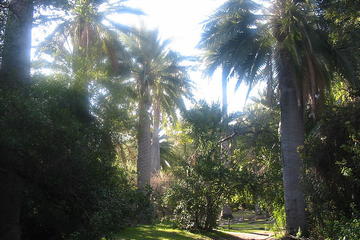 La Campana
La Campana Home to some of the last remaining forests of the endangered Chilean Wine Palm, La Campana became a national park in 1967 and contains over 17,000 acres of settlement ruins, hiking trails, and exotic wildlife.Naturalist and explorer Charles Darwin himself paid the spot a visit in 1834,
La Campana
La Campana Home to some of the last remaining forests of the endangered Chilean Wine Palm, La Campana became a national park in 1967 and contains over 17,000 acres of settlement ruins, hiking trails, and exotic wildlife.Naturalist and explorer Charles Darwin himself paid the spot a visit in 1834,
-
 Isla Negra
Isla Negra Isla Negra is one of three of Chile’s favorite poet, Pablo Neruda’s homes-turned-museums that are open to visitors. Despite what its name might indicate, it is on the Chilean coast, not on an island. The house is built to resemble a boat, complete with low ceilings and narrow hallways w
Isla Negra
Isla Negra Isla Negra is one of three of Chile’s favorite poet, Pablo Neruda’s homes-turned-museums that are open to visitors. Despite what its name might indicate, it is on the Chilean coast, not on an island. The house is built to resemble a boat, complete with low ceilings and narrow hallways w
-
 Iglesia San Francisco de Borja
Iglesia San Francisco de Borja Visitors to Santiago can take a trip back in time just by walking through the doors of the famous Iglesia San Francisco de Borja. This iconic church ranks among the city’s oldest—and most beautiful—religious structures, and dates back to the original Spanish settleme
Iglesia San Francisco de Borja
Iglesia San Francisco de Borja Visitors to Santiago can take a trip back in time just by walking through the doors of the famous Iglesia San Francisco de Borja. This iconic church ranks among the city’s oldest—and most beautiful—religious structures, and dates back to the original Spanish settleme
-
 Hanga Piko
Hanga Piko A short walk along the waterfront from Hanga Roa and overlooked by a lone moai, the sleepy harbor village of Hanga Piko is the main cargo port for Easter Island and the center of its small fishing industry. Most visitors come to Hanga Piko to enjoy a boat tour around the island, taking
Hanga Piko
Hanga Piko A short walk along the waterfront from Hanga Roa and overlooked by a lone moai, the sleepy harbor village of Hanga Piko is the main cargo port for Easter Island and the center of its small fishing industry. Most visitors come to Hanga Piko to enjoy a boat tour around the island, taking
-
 Farellones and El Colorado
Farellones and El Colorado These two connected villages, only an hour away from Santiago, comprise one of the most popular ski centers in the country, both because of their proximity to the capital and their high number of ski runs.Ranging up to almost 11,000 ft (3,352m) above sea level, and with
Farellones and El Colorado
Farellones and El Colorado These two connected villages, only an hour away from Santiago, comprise one of the most popular ski centers in the country, both because of their proximity to the capital and their high number of ski runs.Ranging up to almost 11,000 ft (3,352m) above sea level, and with
-
 Estancia el Cuadro
Estancia el Cuadro Estancia el Cuadro is maybe most well known for being the convention center for wine tourism in the Casablanca region and hosting a wide variety of cultural as well as wine-related activities. Apart from the sizable restaurant and meeting rooms, which are often used to accommoda
Estancia el Cuadro
Estancia el Cuadro Estancia el Cuadro is maybe most well known for being the convention center for wine tourism in the Casablanca region and hosting a wide variety of cultural as well as wine-related activities. Apart from the sizable restaurant and meeting rooms, which are often used to accommoda
-
 El Yeso Dam (Embalse El Yeso)
El Yeso Dam (Embalse El Yeso) Located in San Jose de Maipo outside of the Chilean capital, El Yeso Dam (Embalse El Yeso) dammed the Yeso River to create a lovely turquoise reservoir that can hold more than 253 million cubic meters of water. While only 60 miles (98 kilometers) outside of Santiago,
El Yeso Dam (Embalse El Yeso)
El Yeso Dam (Embalse El Yeso) Located in San Jose de Maipo outside of the Chilean capital, El Yeso Dam (Embalse El Yeso) dammed the Yeso River to create a lovely turquoise reservoir that can hold more than 253 million cubic meters of water. While only 60 miles (98 kilometers) outside of Santiago,
-
 Cousino Palace
Cousino Palace The Chilean building boom of the late 1800s, spurred by rising silver, copper, and nitrite prices worldwide, inspired some of the citys most marvelous architecture. Grand palaces, their stern neoclassical facades fashionably adorned touches of baroque and art nouveau frill. The fine
Cousino Palace
Cousino Palace The Chilean building boom of the late 1800s, spurred by rising silver, copper, and nitrite prices worldwide, inspired some of the citys most marvelous architecture. Grand palaces, their stern neoclassical facades fashionably adorned touches of baroque and art nouveau frill. The fine
-
 Concon
Concon Travelers in search of picturesque beaches, iconic balnearios and extraordinary nightlife will find the ultimate tropical trifecta in the coastal commune of Concon. Home to three of the nation’s top beaches—Playa Negra, Amarilla and Boca, Concon has plenty of options for holiday visitors on
Concon
Concon Travelers in search of picturesque beaches, iconic balnearios and extraordinary nightlife will find the ultimate tropical trifecta in the coastal commune of Concon. Home to three of the nation’s top beaches—Playa Negra, Amarilla and Boca, Concon has plenty of options for holiday visitors on
-
 Colchagua Valley
Colchagua Valley If you’re interested in tasting some of the best wines Chile has to offer, you’ll want to spend some time in the Colchagua Valley. Nearly two dozen area wineries are open to the public in what has become the country’s most prominent wine region, where the dry climate, plentiful su
Colchagua Valley
Colchagua Valley If you’re interested in tasting some of the best wines Chile has to offer, you’ll want to spend some time in the Colchagua Valley. Nearly two dozen area wineries are open to the public in what has become the country’s most prominent wine region, where the dry climate, plentiful su
-
 Club Hipico
Club Hipico Santiagos Club Hipico (Club Hípico de Santiago) is the most exclusive of Santiagos race tracks. Dating back to 1870, its the oldest racetrack in country and home to South Americas oldest stakes race — the Clásico El Ensayo, making it the best place to see thoroughbred horse racing whil
Club Hipico
Club Hipico Santiagos Club Hipico (Club Hípico de Santiago) is the most exclusive of Santiagos race tracks. Dating back to 1870, its the oldest racetrack in country and home to South Americas oldest stakes race — the Clásico El Ensayo, making it the best place to see thoroughbred horse racing whil
-
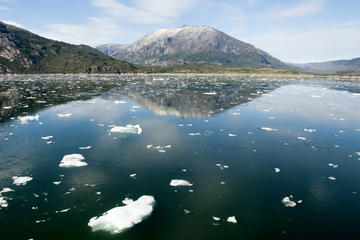 Channel of Last Hope (Ultima Esperanza)
Channel of Last Hope (Ultima Esperanza) Not nearly as foreboding as it sounds, the Channel of Las Hope (Ultima Esperanza) is in fact a calm inlet stretching from Eberhard Fjord to Monte Balmaceda. In 1557, Spanish explorer Juan Ladrillero gave the channel its ominous name when he believed navigati
Channel of Last Hope (Ultima Esperanza)
Channel of Last Hope (Ultima Esperanza) Not nearly as foreboding as it sounds, the Channel of Las Hope (Ultima Esperanza) is in fact a calm inlet stretching from Eberhard Fjord to Monte Balmaceda. In 1557, Spanish explorer Juan Ladrillero gave the channel its ominous name when he believed navigati
-
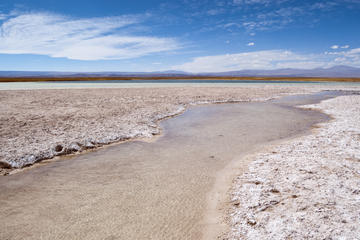 Cejar Lagoon
Cejar Lagoon Located just 20 miles from the town of San Pedro de Atacama, this unusual desert sinkhole attracts many visitors. Filled with water, Cejar Lagoon is popular for the opportunity it provides to take a dip in the middle of the desert. The water can have salt concentrations up to 30 perce
Cejar Lagoon
Cejar Lagoon Located just 20 miles from the town of San Pedro de Atacama, this unusual desert sinkhole attracts many visitors. Filled with water, Cejar Lagoon is popular for the opportunity it provides to take a dip in the middle of the desert. The water can have salt concentrations up to 30 perce
-
 Casablanca Valley
Casablanca Valley Its close proximity to the Pacific Ocean and unique mix of clay and sandy soils has made the Casablanca Valley one of Chile’s top wine producing regions despite it’s relatively new arrival on the scene. The first vines were planted in the mid-1980s—more than 100 years later than
Casablanca Valley
Casablanca Valley Its close proximity to the Pacific Ocean and unique mix of clay and sandy soils has made the Casablanca Valley one of Chile’s top wine producing regions despite it’s relatively new arrival on the scene. The first vines were planted in the mid-1980s—more than 100 years later than
-
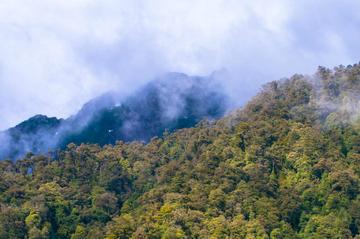 Carretera Austral
Carretera Austral Whether by car or bike, it’s hard to dispute that the Carreterra Austral is one of South Americas most rugged — and scenic — highway routes. Winding through the wilderness of Patagonia, the road is often remote and rough but grants access to some of the most naturally beautiful p
Carretera Austral
Carretera Austral Whether by car or bike, it’s hard to dispute that the Carreterra Austral is one of South Americas most rugged — and scenic — highway routes. Winding through the wilderness of Patagonia, the road is often remote and rough but grants access to some of the most naturally beautiful p
-
 Barrio Italia
Barrio Italia Italian immigrant artists began settling the neighborhood surrounding Avenida Italia during the nineteenth century. During the first half of the 1900s, the neighborhood became a hub of commercial and industrial activity, and today, it’s quickly becoming one of Santiago’s trendiest ne
Barrio Italia
Barrio Italia Italian immigrant artists began settling the neighborhood surrounding Avenida Italia during the nineteenth century. During the first half of the 1900s, the neighborhood became a hub of commercial and industrial activity, and today, it’s quickly becoming one of Santiago’s trendiest ne
Total
510 -travel
FirstPage PreviousPage NextPage LastPage CurrentPage:
3/26 20-travel/Page GoTo Page:
 La Serena
La Serena The romantic, seaside city of La Serena, wrapped around some of the most beautiful beaches in northern Chile, is more than just a fine spot to relax with a mixed drink and work on your tan. (Though the appealing collection of spas, restaurants, and nightlife options might convince you ot
La Serena
La Serena The romantic, seaside city of La Serena, wrapped around some of the most beautiful beaches in northern Chile, is more than just a fine spot to relax with a mixed drink and work on your tan. (Though the appealing collection of spas, restaurants, and nightlife options might convince you ot
 La Moneda
La Moneda La Moneda is easy to spot – its white, neoclassical walls make up the presidential palace that takes up an entire city block in downtown Santiago. Construction began in 1781 and was completed in 1805, when it was used as a mint, which is what the term moneda translates to in English.The
La Moneda
La Moneda La Moneda is easy to spot – its white, neoclassical walls make up the presidential palace that takes up an entire city block in downtown Santiago. Construction began in 1781 and was completed in 1805, when it was used as a mint, which is what the term moneda translates to in English.The
 Lake Todos los Santos
Lake Todos los Santos Lago Todos los Santos, or All Saints Lake, is located within Vicente Perez Rosales National Park in the lakes region of southern Chile. Sometimes it is referred to as Lago Esmeralda, which means Emerald Lake, due to its emerald green color. It is one of the biggest attraction
Lake Todos los Santos
Lake Todos los Santos Lago Todos los Santos, or All Saints Lake, is located within Vicente Perez Rosales National Park in the lakes region of southern Chile. Sometimes it is referred to as Lago Esmeralda, which means Emerald Lake, due to its emerald green color. It is one of the biggest attraction
 La Iglesia San Vicente Ferrer
La Iglesia San Vicente Ferrer Santiago’s La Iglesia San Vicente Ferrer is a beautiful whitewashed church and national monument that appeared on Chile’s 2,000 peso banknote from 1997-2010. Just to the side of San Vicente Ferrer church, you’ll find Los Dominicos Village — the popular arts, crafts, a
La Iglesia San Vicente Ferrer
La Iglesia San Vicente Ferrer Santiago’s La Iglesia San Vicente Ferrer is a beautiful whitewashed church and national monument that appeared on Chile’s 2,000 peso banknote from 1997-2010. Just to the side of San Vicente Ferrer church, you’ll find Los Dominicos Village — the popular arts, crafts, a
 La Campana
La Campana Home to some of the last remaining forests of the endangered Chilean Wine Palm, La Campana became a national park in 1967 and contains over 17,000 acres of settlement ruins, hiking trails, and exotic wildlife.Naturalist and explorer Charles Darwin himself paid the spot a visit in 1834,
La Campana
La Campana Home to some of the last remaining forests of the endangered Chilean Wine Palm, La Campana became a national park in 1967 and contains over 17,000 acres of settlement ruins, hiking trails, and exotic wildlife.Naturalist and explorer Charles Darwin himself paid the spot a visit in 1834,
 Isla Negra
Isla Negra Isla Negra is one of three of Chile’s favorite poet, Pablo Neruda’s homes-turned-museums that are open to visitors. Despite what its name might indicate, it is on the Chilean coast, not on an island. The house is built to resemble a boat, complete with low ceilings and narrow hallways w
Isla Negra
Isla Negra Isla Negra is one of three of Chile’s favorite poet, Pablo Neruda’s homes-turned-museums that are open to visitors. Despite what its name might indicate, it is on the Chilean coast, not on an island. The house is built to resemble a boat, complete with low ceilings and narrow hallways w
 Iglesia San Francisco de Borja
Iglesia San Francisco de Borja Visitors to Santiago can take a trip back in time just by walking through the doors of the famous Iglesia San Francisco de Borja. This iconic church ranks among the city’s oldest—and most beautiful—religious structures, and dates back to the original Spanish settleme
Iglesia San Francisco de Borja
Iglesia San Francisco de Borja Visitors to Santiago can take a trip back in time just by walking through the doors of the famous Iglesia San Francisco de Borja. This iconic church ranks among the city’s oldest—and most beautiful—religious structures, and dates back to the original Spanish settleme
 Hanga Piko
Hanga Piko A short walk along the waterfront from Hanga Roa and overlooked by a lone moai, the sleepy harbor village of Hanga Piko is the main cargo port for Easter Island and the center of its small fishing industry. Most visitors come to Hanga Piko to enjoy a boat tour around the island, taking
Hanga Piko
Hanga Piko A short walk along the waterfront from Hanga Roa and overlooked by a lone moai, the sleepy harbor village of Hanga Piko is the main cargo port for Easter Island and the center of its small fishing industry. Most visitors come to Hanga Piko to enjoy a boat tour around the island, taking
 Farellones and El Colorado
Farellones and El Colorado These two connected villages, only an hour away from Santiago, comprise one of the most popular ski centers in the country, both because of their proximity to the capital and their high number of ski runs.Ranging up to almost 11,000 ft (3,352m) above sea level, and with
Farellones and El Colorado
Farellones and El Colorado These two connected villages, only an hour away from Santiago, comprise one of the most popular ski centers in the country, both because of their proximity to the capital and their high number of ski runs.Ranging up to almost 11,000 ft (3,352m) above sea level, and with
 Estancia el Cuadro
Estancia el Cuadro Estancia el Cuadro is maybe most well known for being the convention center for wine tourism in the Casablanca region and hosting a wide variety of cultural as well as wine-related activities. Apart from the sizable restaurant and meeting rooms, which are often used to accommoda
Estancia el Cuadro
Estancia el Cuadro Estancia el Cuadro is maybe most well known for being the convention center for wine tourism in the Casablanca region and hosting a wide variety of cultural as well as wine-related activities. Apart from the sizable restaurant and meeting rooms, which are often used to accommoda
 El Yeso Dam (Embalse El Yeso)
El Yeso Dam (Embalse El Yeso) Located in San Jose de Maipo outside of the Chilean capital, El Yeso Dam (Embalse El Yeso) dammed the Yeso River to create a lovely turquoise reservoir that can hold more than 253 million cubic meters of water. While only 60 miles (98 kilometers) outside of Santiago,
El Yeso Dam (Embalse El Yeso)
El Yeso Dam (Embalse El Yeso) Located in San Jose de Maipo outside of the Chilean capital, El Yeso Dam (Embalse El Yeso) dammed the Yeso River to create a lovely turquoise reservoir that can hold more than 253 million cubic meters of water. While only 60 miles (98 kilometers) outside of Santiago,
 Cousino Palace
Cousino Palace The Chilean building boom of the late 1800s, spurred by rising silver, copper, and nitrite prices worldwide, inspired some of the citys most marvelous architecture. Grand palaces, their stern neoclassical facades fashionably adorned touches of baroque and art nouveau frill. The fine
Cousino Palace
Cousino Palace The Chilean building boom of the late 1800s, spurred by rising silver, copper, and nitrite prices worldwide, inspired some of the citys most marvelous architecture. Grand palaces, their stern neoclassical facades fashionably adorned touches of baroque and art nouveau frill. The fine
 Concon
Concon Travelers in search of picturesque beaches, iconic balnearios and extraordinary nightlife will find the ultimate tropical trifecta in the coastal commune of Concon. Home to three of the nation’s top beaches—Playa Negra, Amarilla and Boca, Concon has plenty of options for holiday visitors on
Concon
Concon Travelers in search of picturesque beaches, iconic balnearios and extraordinary nightlife will find the ultimate tropical trifecta in the coastal commune of Concon. Home to three of the nation’s top beaches—Playa Negra, Amarilla and Boca, Concon has plenty of options for holiday visitors on
 Colchagua Valley
Colchagua Valley If you’re interested in tasting some of the best wines Chile has to offer, you’ll want to spend some time in the Colchagua Valley. Nearly two dozen area wineries are open to the public in what has become the country’s most prominent wine region, where the dry climate, plentiful su
Colchagua Valley
Colchagua Valley If you’re interested in tasting some of the best wines Chile has to offer, you’ll want to spend some time in the Colchagua Valley. Nearly two dozen area wineries are open to the public in what has become the country’s most prominent wine region, where the dry climate, plentiful su
 Club Hipico
Club Hipico Santiagos Club Hipico (Club Hípico de Santiago) is the most exclusive of Santiagos race tracks. Dating back to 1870, its the oldest racetrack in country and home to South Americas oldest stakes race — the Clásico El Ensayo, making it the best place to see thoroughbred horse racing whil
Club Hipico
Club Hipico Santiagos Club Hipico (Club Hípico de Santiago) is the most exclusive of Santiagos race tracks. Dating back to 1870, its the oldest racetrack in country and home to South Americas oldest stakes race — the Clásico El Ensayo, making it the best place to see thoroughbred horse racing whil
 Channel of Last Hope (Ultima Esperanza)
Channel of Last Hope (Ultima Esperanza) Not nearly as foreboding as it sounds, the Channel of Las Hope (Ultima Esperanza) is in fact a calm inlet stretching from Eberhard Fjord to Monte Balmaceda. In 1557, Spanish explorer Juan Ladrillero gave the channel its ominous name when he believed navigati
Channel of Last Hope (Ultima Esperanza)
Channel of Last Hope (Ultima Esperanza) Not nearly as foreboding as it sounds, the Channel of Las Hope (Ultima Esperanza) is in fact a calm inlet stretching from Eberhard Fjord to Monte Balmaceda. In 1557, Spanish explorer Juan Ladrillero gave the channel its ominous name when he believed navigati
 Cejar Lagoon
Cejar Lagoon Located just 20 miles from the town of San Pedro de Atacama, this unusual desert sinkhole attracts many visitors. Filled with water, Cejar Lagoon is popular for the opportunity it provides to take a dip in the middle of the desert. The water can have salt concentrations up to 30 perce
Cejar Lagoon
Cejar Lagoon Located just 20 miles from the town of San Pedro de Atacama, this unusual desert sinkhole attracts many visitors. Filled with water, Cejar Lagoon is popular for the opportunity it provides to take a dip in the middle of the desert. The water can have salt concentrations up to 30 perce
 Casablanca Valley
Casablanca Valley Its close proximity to the Pacific Ocean and unique mix of clay and sandy soils has made the Casablanca Valley one of Chile’s top wine producing regions despite it’s relatively new arrival on the scene. The first vines were planted in the mid-1980s—more than 100 years later than
Casablanca Valley
Casablanca Valley Its close proximity to the Pacific Ocean and unique mix of clay and sandy soils has made the Casablanca Valley one of Chile’s top wine producing regions despite it’s relatively new arrival on the scene. The first vines were planted in the mid-1980s—more than 100 years later than
 Carretera Austral
Carretera Austral Whether by car or bike, it’s hard to dispute that the Carreterra Austral is one of South Americas most rugged — and scenic — highway routes. Winding through the wilderness of Patagonia, the road is often remote and rough but grants access to some of the most naturally beautiful p
Carretera Austral
Carretera Austral Whether by car or bike, it’s hard to dispute that the Carreterra Austral is one of South Americas most rugged — and scenic — highway routes. Winding through the wilderness of Patagonia, the road is often remote and rough but grants access to some of the most naturally beautiful p
 Barrio Italia
Barrio Italia Italian immigrant artists began settling the neighborhood surrounding Avenida Italia during the nineteenth century. During the first half of the 1900s, the neighborhood became a hub of commercial and industrial activity, and today, it’s quickly becoming one of Santiago’s trendiest ne
Barrio Italia
Barrio Italia Italian immigrant artists began settling the neighborhood surrounding Avenida Italia during the nineteenth century. During the first half of the 1900s, the neighborhood became a hub of commercial and industrial activity, and today, it’s quickly becoming one of Santiago’s trendiest ne